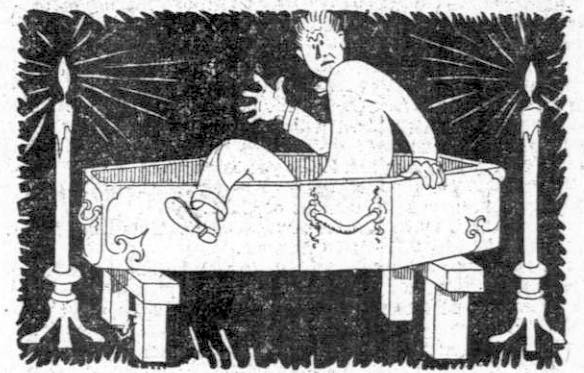
While written in 1912, this newspaper article brings up some points that we still haven’t fully answered today. For example, should we look the other way when a convicted murderer chooses to end his life before receiving the death penalty? Should we try and learn more about what goes on in the mind of a murderer (it is not clean cut like in Criminal Minds)? Are they pure evil or is there still some good in them? Is it foolish to extend understanding or is it a sign of an enlightened society?

The Case of Nathan Schwartz
Did Nathan Schwartz, the New York boy who brutally murdered poor little Julia Connors, “cheats the electric chair,” as the dispatches said, when he killed himself a few days later.
This is a question which we should answer as a people. We should answer it not in passion for revenge, or in lust after a life for a life, but with such calmness as may be commanded in the sight of such a horrid thing.
Young Schwartz killed little Julia Connors in such a way that the details are known to few. But we know this — it was one of those sex crimes in which the victim is dreadfully mutilated for no apparent reason.
The modern world had its attention first focused on such things when years ago, “Jack the Ripper” carried terror to the women of the Whitechapel district in London. For months, at intervals, these women were found slashed and dismembered by senseless and blind insanity. Since then there has been a “Jack the Ripper” on the criminal map somewhere almost all the time. Probably such crimes have been a part of the mystery of sex psychology from before the dawn of history.
The case of Nathan Schwartz should be studied if for no other reason than to demonstrate that the perpetrators of such deeds are not necessarily bad men. They are madmen. Nathan Schwartz no more understood why he did the thing for which he punished himself by death than any normal man knows.
“Tell mother,” says he in that pathetic, tragic, heartbreaking letter which he left behind, “that I am really guilty, and that she shall not cry her eyes and heart out. I know she thinks I am innocent. I am sorry I done it, but I got crazy, as I often do, and you can’t blame me for it, nor any one.”
He was more severe with himself than enlightened criminology will be. For where he says “guilty” and “crazy,” the world will one day agree to say only “insane.”
He was not a bad boy. He wrote “This is to my dear mother who I am always homesick for.” He told in this last letter of two days’ wages owing to him and asked that the money be given “to mother — for she is very poor.” He wrote that he was sorry to make all that trouble for his “neighbor,” the boardinghouse keeper. “But,” said he, “all he will have to do will be to call a cop.”
The letter shows that this boy’s soul, like Othello’s, was not essentially evil, but “perplexed in the extreme.” He was ruled by a recurring, fixed and uncontrollable impulse. So are all those men whose dreadful sex crimes bring them into the grip of the law habitually.
Every “Jack the Ripper” is a madman. Instead of being punished, they should be cured. Most of them can be cured by hypnotic treatment according to the practices of the new school of therapeutics, of which Morton Prince, M.D., of Boston, is, perhaps, the head. Those who cannot be so cured in that way, may be cured by surgery. And if any remain incurred, they belong in sanatoria, and not in the electric chair or state prisons.
They are better dead than alive, if they cannot be healed, but we cannot afford to murder them.
If we had had some agency for the treatment of such cases of perverted psychology, perhaps Nathan Schwartz might have been treated years ago, and Julia Connors saved.
Source: The Day Book (Chicago, Illinois newspaper). July 30, 1912.

